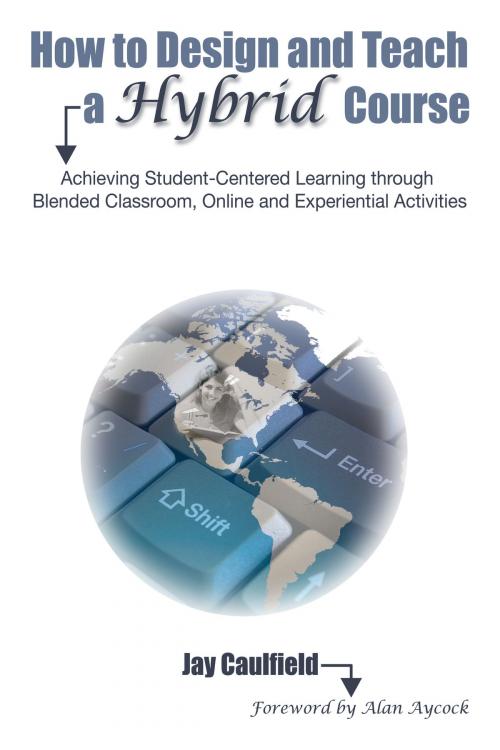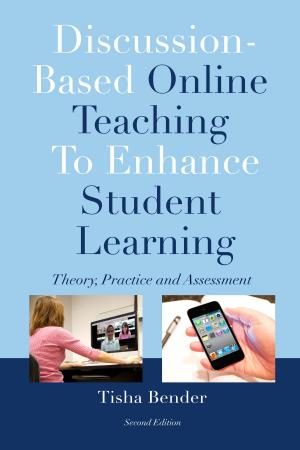How to Design and Teach a Hybrid Course
Achieving Student-Centered Learning through Blended Classroom, Online and Experiential Activities
Nonfiction, Reference & Language, Education & Teaching, Higher Education| Author: | Jay Caulfield | ISBN: | 9781579226046 |
| Publisher: | Stylus Publishing | Publication: | March 27, 2012 |
| Imprint: | Stylus Publishing | Language: | English |
| Author: | Jay Caulfield |
| ISBN: | 9781579226046 |
| Publisher: | Stylus Publishing |
| Publication: | March 27, 2012 |
| Imprint: | Stylus Publishing |
| Language: | English |
This practical handbook for designing and teaching hybrid or blended courses focuses on outcomes-based practice. It reflects the author’s experience of having taught over 70 hybrid courses and having worked for three years in the Learning Technology Center at the University of Wisconsin-Milwaukee, a center that is recognized as a leader in the field of hybrid course design.
Jay Caulfield defines hybrid courses as ones where not only is face time replaced to varying degrees by online learning, but also by experiential learning that takes place in the community or within an organization with or without the presence of a teacher; and as a pedagogy that places the primary responsibility of learning on the learner, with the teacher’s primary role being to create opportunities and environments that foster independent and collaborative student learning.
Starting with a brief review of the relevant theory – such as andragogy, inquiry-based learning, experiential learning and theories that specifically relate to distance education – she addresses the practicalities of planning a hybrid course, taking into account class characteristics such as size, demographics, subject matter, learning outcomes, and time available. She offers criteria for determining the appropriate mix of face-to-face, online, and experiential components for a course, and guidance on creating social presence online.
Jay Caulfield defines hybrid courses as ones where not only is face time replaced to varying degrees by online learning, but also by experiential learning that takes place in the community or within an organization with or without the presence of a teacher; and as a pedagogy that places the primary responsibility of learning on the learner, with the teacher’s primary role being to create opportunities and environments that foster independent and collaborative student learning.
Starting with a brief review of the relevant theory – such as andragogy, inquiry-based learning, experiential learning and theories that specifically relate to distance education – she addresses the practicalities of planning a hybrid course, taking into account class characteristics such as size, demographics, subject matter, learning outcomes, and time available. She offers criteria for determining the appropriate mix of face-to-face, online, and experiential components for a course, and guidance on creating social presence online.
This practical handbook for designing and teaching hybrid or blended courses focuses on outcomes-based practice. It reflects the author’s experience of having taught over 70 hybrid courses and having worked for three years in the Learning Technology Center at the University of Wisconsin-Milwaukee, a center that is recognized as a leader in the field of hybrid course design.
Jay Caulfield defines hybrid courses as ones where not only is face time replaced to varying degrees by online learning, but also by experiential learning that takes place in the community or within an organization with or without the presence of a teacher; and as a pedagogy that places the primary responsibility of learning on the learner, with the teacher’s primary role being to create opportunities and environments that foster independent and collaborative student learning.
Starting with a brief review of the relevant theory – such as andragogy, inquiry-based learning, experiential learning and theories that specifically relate to distance education – she addresses the practicalities of planning a hybrid course, taking into account class characteristics such as size, demographics, subject matter, learning outcomes, and time available. She offers criteria for determining the appropriate mix of face-to-face, online, and experiential components for a course, and guidance on creating social presence online.
Jay Caulfield defines hybrid courses as ones where not only is face time replaced to varying degrees by online learning, but also by experiential learning that takes place in the community or within an organization with or without the presence of a teacher; and as a pedagogy that places the primary responsibility of learning on the learner, with the teacher’s primary role being to create opportunities and environments that foster independent and collaborative student learning.
Starting with a brief review of the relevant theory – such as andragogy, inquiry-based learning, experiential learning and theories that specifically relate to distance education – she addresses the practicalities of planning a hybrid course, taking into account class characteristics such as size, demographics, subject matter, learning outcomes, and time available. She offers criteria for determining the appropriate mix of face-to-face, online, and experiential components for a course, and guidance on creating social presence online.















